With the continuous evolution of architectural designs and the need for more affordable and sustainable housing options, container homes are fast becoming a popular choice.
Contrary to a decade ago when traditional homes were the primary option, individuals who crave something unique, affordable, and eco-friendly are veering towards container homes.
However, choosing between a shipping container home or a traditional home can be a difficult decision as each comes with its own set of pros and cons.
This necessitates a comprehensive understanding of these housing options. This discussion provides an in-depth comparison between the two to help you make an informed decision on the ideal option that suits your housing needs.
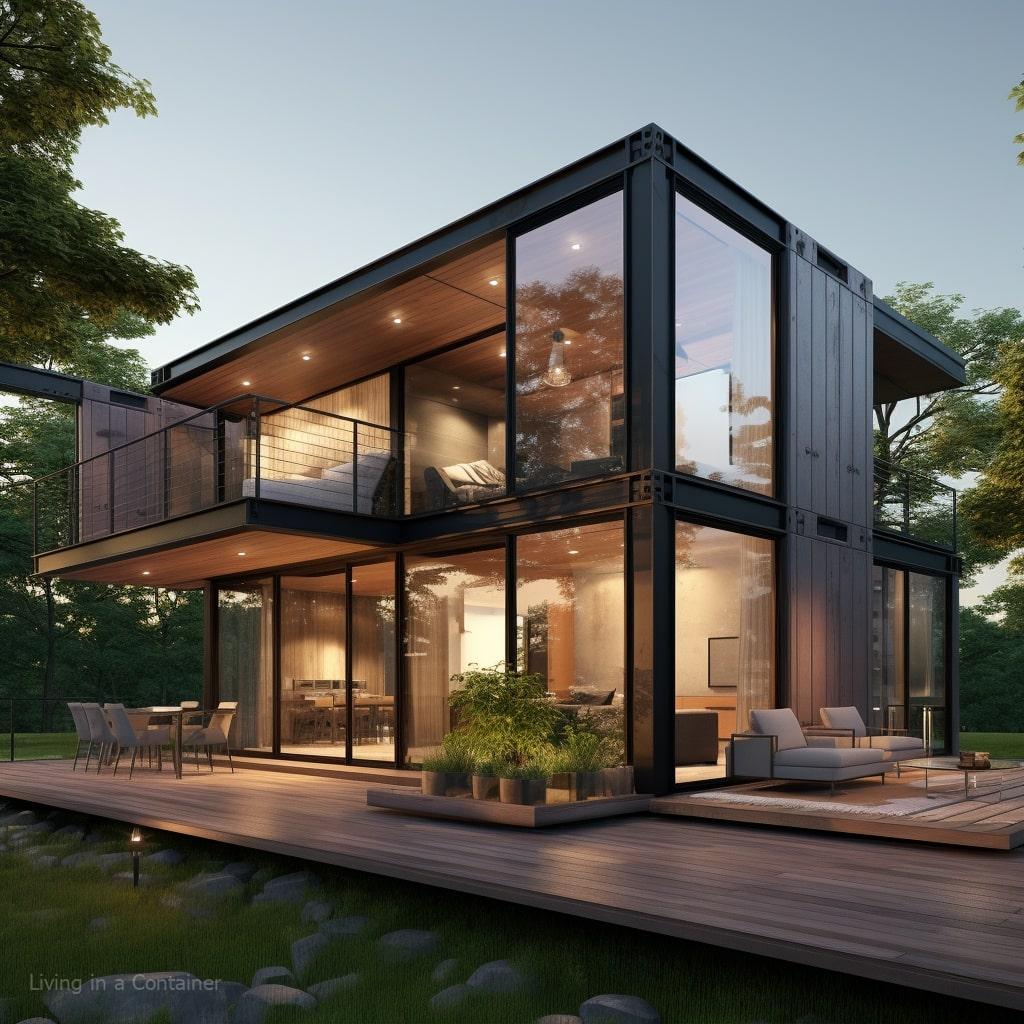
Understanding Container Homes
Understanding Container Homes
Container homes are an innovative form of architecture that repurpose old shipping containers into livable space. This concept first surfaced around the late 20th century, originally employed as a solution for efficient, affordable, and sustainable housing.
The unique characteristics of these homes, such as the rectangular, modular design and the apparent industrial aesthetics, have proven to be eye-catching and appealing to many.
On a structural level, these homes are made from old shipping containers, which are built to be robust, long-lasting and able to withstand harsh weather conditions.
Newer models even come with essential home features such as windows, doors, insulation, and utilities, providing all the basic necessities of a traditional home with the added benefit of portability and adaptability.
One advantage of container homes is their affordability. The cost of a used shipping container can range from as low as $3,000 to $5,000, depending on its condition and size. Combined with the costs of renovation and customization, a container home could end up costing significantly less than a similar-sized traditional home.
Additionally, container homes are seen as a more sustainable living option. The repurposing of containers reduces the need for new building materials and minimizes waste. It’s a form of upcycling that effectively gives a second life to objects originally destined for the scrap heap.
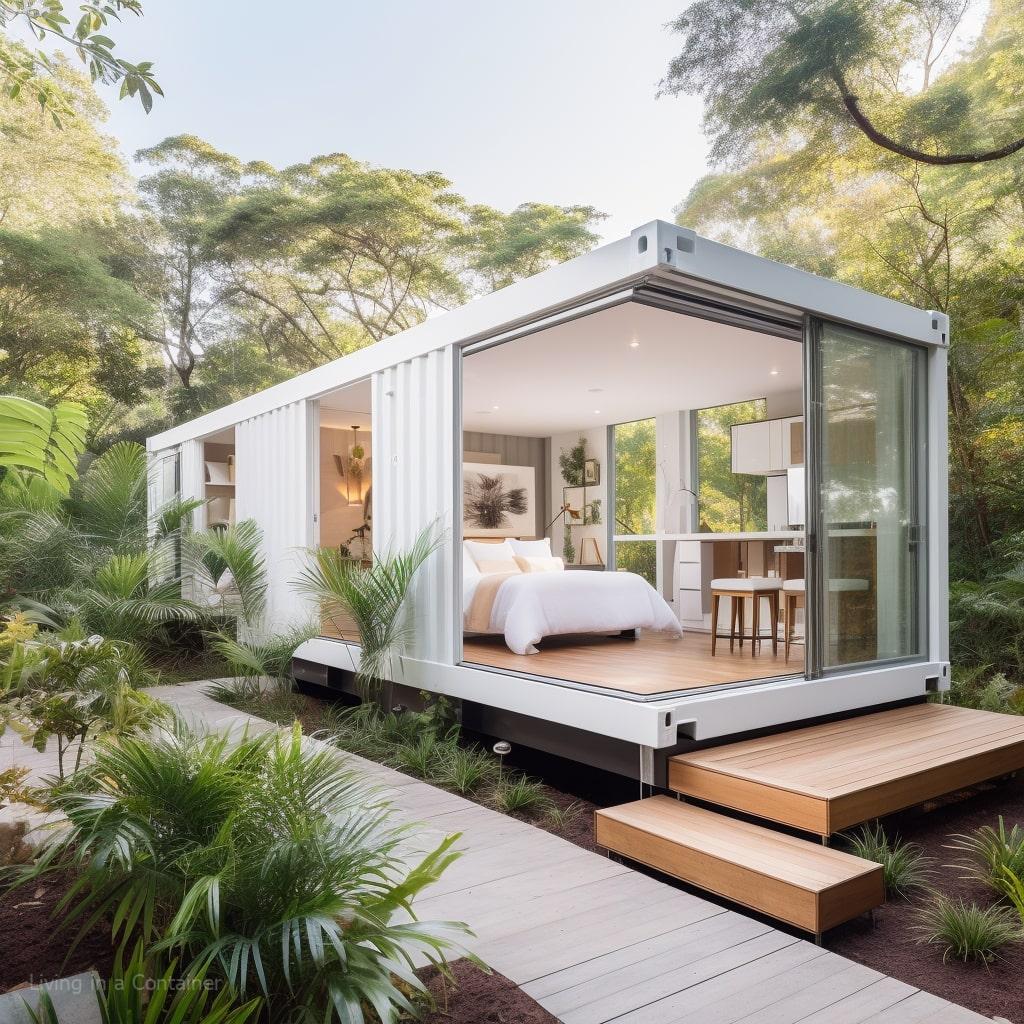
Container Homes versus Traditional Homes: A Comparison
When examining the concept of container homes, many people often find both its benefits and limitations. One of the primary constraints is the more compact living space available as compared to traditional homes.
A typical 40-foot shipping container provides approximately 320 square feet of living space, which is significantly less than the average American home’s 2,392 square feet, according to U.S. Census Bureau data. This can make container homes less suitable for larger families or those who value a spacious living environment.
Beyond space concerns, there’s the matter of local zoning laws and building codes. Many locations have precise restrictions regarding where and how a container home can be constructed, making permit acquisitions and loan approvals a potential challenge in some areas for those who wish to dwell in these unconventional homes.
The slightly more complex approval process for container homes brings to light a peculiar dichotomy, the homes’ uniqueness is both an enchanting prospect and sometimes a barrier to their acceptance and proliferation.
In essence, the choice between a container home and a traditional home is subjective and dependent on various factors such as individual preference, lifestyle, and financial capability. To some, a container home could be the perfect solution for an affordable, sustainable and minimalist lifestyle. In contrast, others might find larger, more familiar traditional homes more appealing.
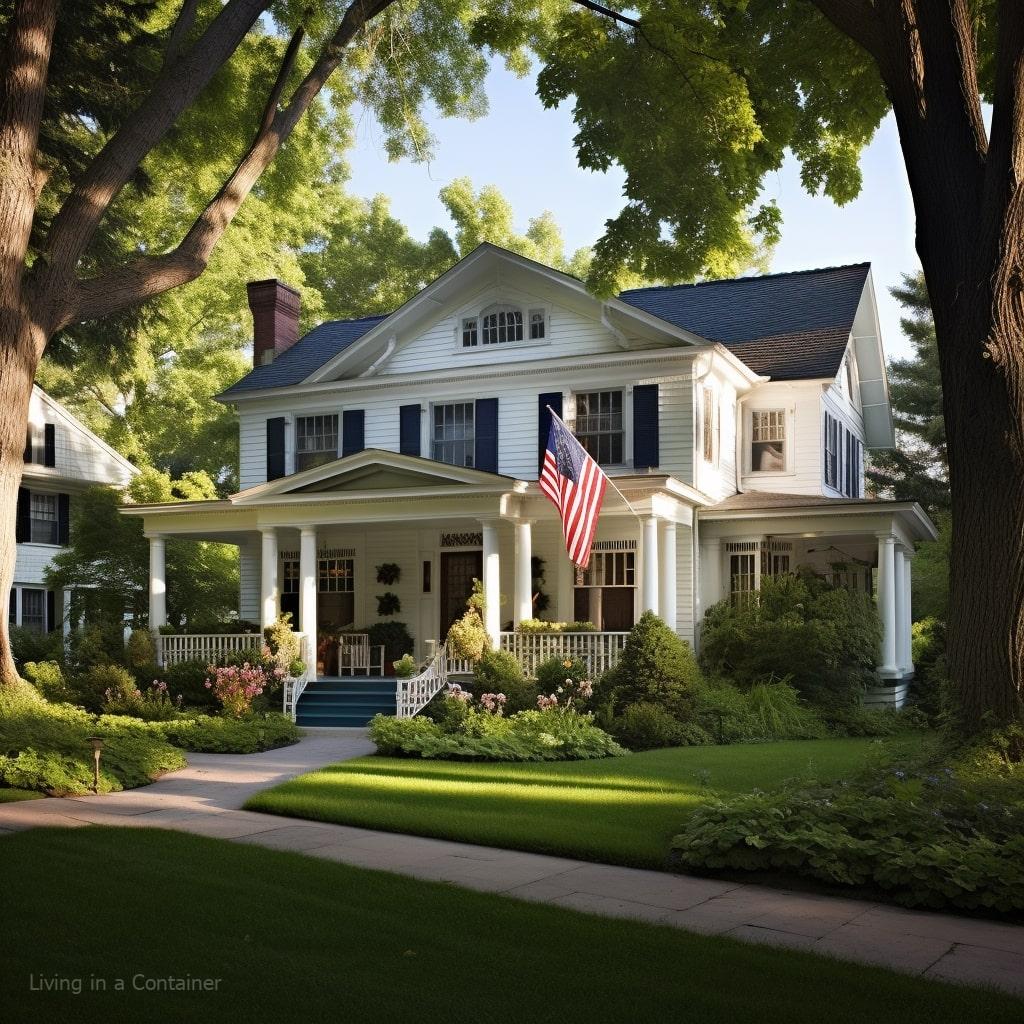
Exploring Traditional Homes
The Traditional American Home: A Symbol of Conventionality
As denoted by its name, traditional American homes are typified by their conventional design and construction methods and materials. These homes are typically constructed using standard materials such as wood, brick, or concrete, etching out the house’s physical framework.
Traditional houses often draw inspiration from specific architectural styles such as Victorian, Colonial, or Ranch, hence displaying elements like pitched roofs, multiple levels, and expansive internal layouts to create a comfortable and timeless living environment.
Construction of Traditional Homes
The construction of traditional homes involves a long-established process. It begins with site preparation, followed by the pouring of a concrete foundation. Wooden framing is then erected, and the walls, ceilings, and roofs are insulated. Sheetrock is then installed, followed by windows and doors.
After the home is weather-tight, electrical wiring, plumbing, and HVAC systems are introduced. Finally, interior fixtures and finishes are added, and the exterior is completed, involving the application of siding, painting, and landscaping.
This process requires significant coordination between various trades and typically involves a team of skilled workers, including carpenters, electricians, plumbers, and painters. Furthermore, the work must also comply with local construction and safety codes.
Typical Features of Traditional Homes
Traditional homes are often characterized by designated rooms for specific functions, including bedrooms, bathrooms, a kitchen, and living spaces. They may also feature a garage, a basement, and an attic. Other potential elements include porches, decks, and a yard or garden space. The size of a traditional home can greatly vary, from the modest single-story house to the more expansive multi-story home.
Advantages and Disadvantages of Traditional Homes
One significant advantage of traditional homes is their flexibility in design. They can be customized to the homeowner’s desires, allowing one to determine the layout and size of the rooms, along with the architectural style. Additionally, these homes are often perceived to have a timeless appeal and may better fit into existing neighborhoods in terms of aesthetics.
Traditional homes typically offer greater square footage, and with that comes more storage and living space. They also often provide better isolation from neighbors, providing more privacy and less noise disruption.
However, traditional homes tend to have higher construction costs and longer build times than alternatives like container homes. They also require more maintenance and, depending on the materials used, may not be as resilient to certain weather conditions.
Furthermore, traditional homes typically involve considerable environmental impact, from the harvesting or production of the building materials to the construction process itself, which can generate significant waste.
Understanding Container Homes versus Traditional Homes
In recent years, the allure of container homes, which are residences crafted from shipping containers, has spread as people recognize their lower environmental footprint, affordability, and quicker construction timelines. Shipping materials offer impressive durability, having been originally designed for the rigors of sea travel.
Despite these benefits, shipping container homes do present certain challenges. Their compact nature may restrict living space, they may necessitate unique zoning permissions or adherence to specific building codes, and they may call for significant insulation upgrades, especially in regions with severe weather.
The customization options for container homes are comparable to those of more traditional homes, although their overall form and layout are initially set by the container’s dimensions.
The choice between a container home and a traditional home will largely depend on the buyer’s individual tastes, needs, and constraints.
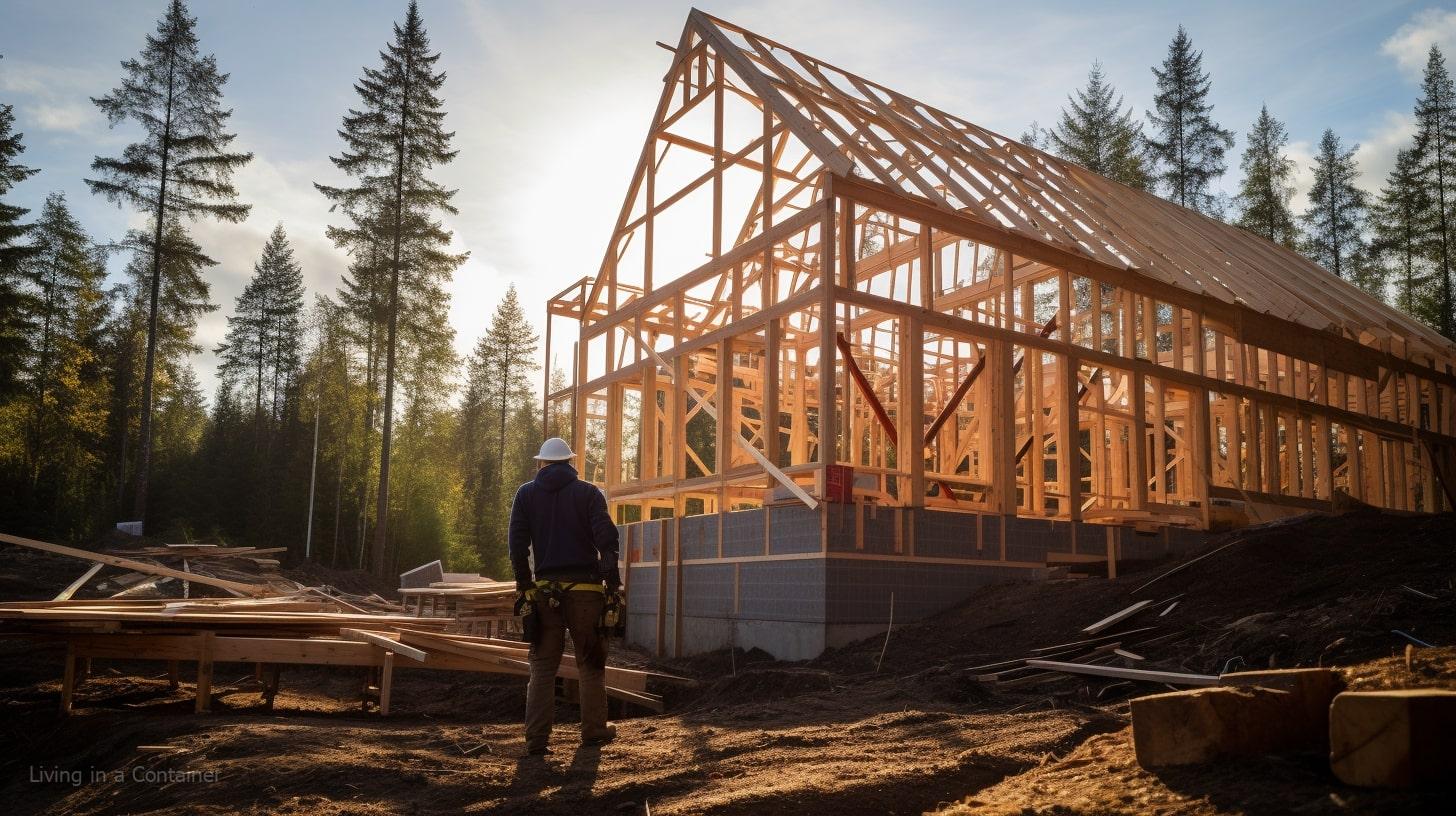
Construction of Container Homes vs Traditional Homes
The Pace of Progress: Fast-Track Container Construction versus Traditional Methods
The speed of construction is one area where container homes have a marked edge over traditional homes. Since the main structure — the shipping container — is premade, a container home can usually be fully built in just a few weeks or months.
The steps involved generally encompass site preparation, container placement and stabilization, and the installation of necessary internal features such as electrical systems, plumbing, and building fixtures like doors and staircases.
In comparison, traditional homes usually require a significantly longer time to complete — often many months to a year or more, depending on the project’s size, complexity, and other factors.
The construction process for a traditional house involves numerous stages, including site preparation, foundation setting, framing, electrical and plumbing installation, roof and wall construction, and finally the fitting out with finishes and appliances.
Required Materials: Recycled Requisites vs New Resources
One of the key differences between container homes and traditional homes is the material used for construction. Container homes are largely made from used shipping containers, which are crafted from high-quality steel. This not only leverages recycling, but also results in an exceptionally sturdy structure. Some modifications and additions will be made to make it habitable, including insulation, interior walls, windows, doors, and roofing.
On the other hand, traditional homes require a large variety of materials from the foundation up, including concrete, lumber, bricks, roofing materials, drywall, and plumbing and electrical components. The requirement of new materials for construction can have a larger environmental impact compared to the reuse of shipping containers.
The Building Process: Conversion vs Construction
The building process of container homes generally involves fewer steps compared to traditional homes. Once the design is finalized, the container is cleaned, any necessary modifications are made, and it is then transported to the site. Once on-site, the containers are assembled and attached as per the design, followed by the addition of insulation, utilities, and interior structures.
Traditional home construction, however, follows a detailed step-by-step process starting from laying the foundation, putting up wooden framing, putting sheathing on the exterior, executing rough-ins for plumbing and electrical, insulation, installation of windows and doors, drywall hanging, and finally, painting and installing finishes. It’s a more labor-intensive process requiring specialized skills at each stage of construction.
Cost Comparison: Upcycled Savings against Custom Expenses
The costs for both container and traditional homes can vary largely depending on the specific project, but it’s generally accepted that container homes could potentially save money over traditional homes.
This stems from the fact that the main structure of container homes is already built. However, the final cost can increase if custom modifications or high-end finishes are requested.
For traditional homes, the cost can be more predictable, but generally higher. They need more labor, more materials, and also are subject to potential cost overruns due to unanticipated complexities in the construction process.
Container homes, while a non-traditional choice, present several enticing advantages such as quicker construction durations, potentially more affordable costs, and efficient use of surplus shipping containers. Meanwhile, traditional homes offer the allure of extensive customization and may cater better to those who favor a more familiar style of living.
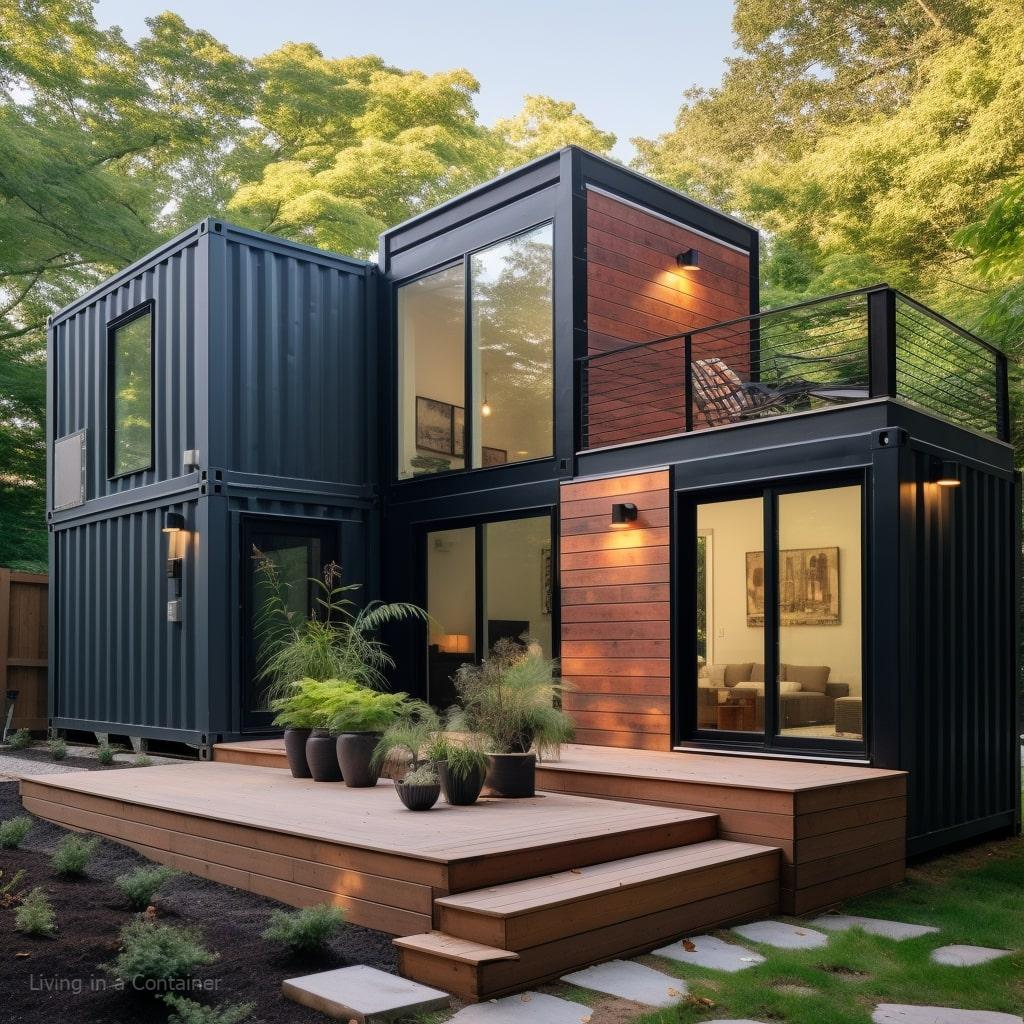
Cost Comparison: Container Vs Traditional Homes
Comparative Costs: Shipping Container Homes vs. Standard Homes
A prominent difference between container homes and traditional homes lies in their respective overall costs, a crucial consideration for prospective homeowners.
The average cost of building a container home typically ranges from $10,000 to $35,000 – a stark contrast to traditionally constructed homes that can start at $200,000 and escalate further.
Given the large-scale production of shipping containers, they are often much more economical than conventional construction materials. It should be underscored that these estimates include the initial purchase of the container, its subsequent modifications, and the overall construction process.
Factors Affecting Construction Costs
The cost of a container home or a traditional home can vary greatly depending on several influential factors. Location, labor, permits, and materials all play a part in the final price. The cost of land is a substantial factor for both types of homes but tends to be more of a concern for traditional homes as they often require larger space. For container homes, the cost of modifications, interior design and insulation tend to be add-ons that can increase the initial budget.
Affordability and Maintenance: Container Homes vs. Traditional Homes
When it comes to affordability and maintenance, container homes often edge out traditional homes in several ways. They typically have lower property taxes, less square footage to maintain and heat, and their construction style is often more resistant to the destructive effects of natural disasters like hurricanes or tornadoes.
Also, due to their smaller size, container homes are generally cheaper to heat and cool than traditional houses, leading to lower utility bills.
Cutting Down Expenses
Both container and traditional home owners have options to cut down the costs. For traditional homes, the judicious choice of materials, location, and house size can lead to significant savings.
For container homes, cost savings can be realized by reducing the number of modifications, choosing a smaller size, or even doing some of the conversion work yourself. Utilizing recycled materials for interior decoration may also reduce the overall cost.
Investment Value Comparison
Traditional homes usually appreciate in value over time, often making them a good long-term investment. Container homes, on the other hand, are a relatively new concept, and so their investment value is somewhat less predictable.
While they are much cheaper to build, there may be more uncertainty about their resale value. However, with rising interest in green building and efficient living spaces, the value of container homes could continue to grow.
When considering housing options, both shipping container and traditional homes each offer unique benefits and drawbacks. Factors such as geographic location, financial situation, personal aesthetic, and long-term goals can largely influence which type of dwelling is the most appropriate choice.

Environmental Impact: Container Homes vs Traditional Homes
Comparing the Environmental Impacts of Container Homes and Traditional Homes
As a form of sustainable housing, shipping container homes provide an innovative recycling solution. The World Shipping Council has reported approximately 24 million retired shipping containers around the globe.
Repurposing these containers into homes can significantly lessen the environmental impact often associated with traditional home building, which generally uses new materials extracted from the planet’s limited resources.
However, it should be noted that container homes are not without their own challenges. Not all shipping containers are safe for residential transformation. Those previously used for carrying harmful substances, those that are seriously rusted, or those with structural damages may be unfit for habitable conversions.
Furthermore, while the steel from which shipping containers are made is recyclable, the energy consumed and the carbon emissions produced during their conversion can also be quite substantial.
Energy Efficiency: Container Homes vs Traditional Homes
The energy efficiency of container homes and traditional homes can largely depend on the design, insulation, and features used in the house. Shipping container homes tend to have smaller spaces, which could mean less energy consumed for heating and cooling. Furthermore, strategically-placed windows and doors can help with natural ventilation and daylighting, reducing reliance on artificial cooling, heating, and lighting.
In a traditional home, it tends to be easier to integrate energy-efficient systems during the design and build phase. Nevertheless, energy efficiency also depends on the lifestyle of the inhabitants. For instance, improperly used or wasteful appliances in either type of home can have a significant impact on energy consumption.
Carbon Footprint: Container Homes vs Traditional Homes
Manufacturing new building materials like concrete and wood for traditional homes tends to significantly contribute to carbon emissions. Furthermore, the demolition of old homes for the construction of new ones adds to waste in landfills, which then releases methane, a potent greenhouse gas.
Conversely, container homes can drastically reduce the need for new materials, decreasing the associated carbon footprint. Using one shipping container recycles about 3500 kg of steel, and saves potential wood use in construction.
However, the carbon footprint linked to the rehabilitation of shipping containers into housing — including transporting the containers, removing and disposal of the flooring, sandblasting to remove old paint and rust, and then cutting and re-welding the steel — can be significant.
In conclusion
While container homes do show promise from an environmental perspective, it largely depends on the specifics of the project. The same can be said for traditional homes. There is always room for reduction of environmental impact through informed choices on the part of builders and homeowners, regardless of the type of home being constructed.
Ultimately, the choice between a container home and a traditional home depends primarily on one’s personal needs, budget, and sustainability goals.
From cost-effectiveness to construction time and environmental impact, these homes offer unique advantages that may be more attractive to different individuals.
Container homes, for instance, provide a less expensive and more eco-friendly alternative, while traditional homes offer permanency and a sense of heritage.
Therefore, strives should be made to balance the numerous factors involved, to ensure the choice made aligns perfectly with an individual’s lifestyle, preferences and future plans while also prioritizing environmental sustainability.
